Repertoire
Dragma
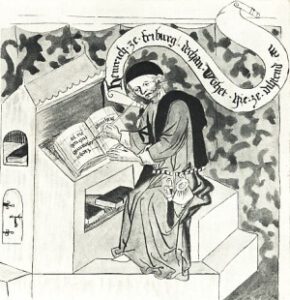 Heinrich Laufenburg – a forgotten poet, mystic and Minnesinger
Heinrich Laufenburg – a forgotten poet, mystic and Minnesinger
Heinrich Laufenberg lived from about 1390 to 1460 in the Swiss region of Aargau, in Southern Germany and in Alsace. During his lifetime he composed a significant body of songs and religious prose. Most of his work was preserved for posterity in one specific manuscript in the Strasbourg library, which was destroyed in a fire in 1870. Luckily a partial transcript of this manuscript was made before the fire, so that some of Laufenberg’s works have survived to this day.
Laufenberg’s surviving songs are of great interest both musically and textually. In one song Laufenberg praises Mary mother of god in artful poetry, in a lullaby he asks Jesus to protect a sleeping babe, in a third song he describes heaven’s kingdom in colorful detail.
The program “Königreich des Himmels – the kingdom of heaven” presents songs that have not been heard for the past 500 years. Laufenberg’s lyrical songs are framed by virtuosic instrumental music of is time. The program paints a detailed and vibrant picture of the late medieval era, brought to life by ensemble Dragma with authenticity, verve and sensuality.
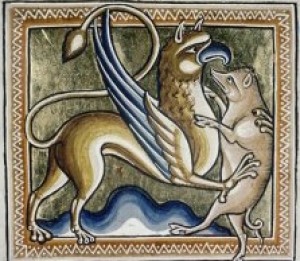 A bestiary is a medieval manuscript depicting animals and mythical creatures. The illustrations are always linked with written descriptions of the animals. Neither the illustrations nor the animal descriptions are realistic in the modern sense, but rather serve to explain the role of man in the medieval world view, often enriched by further religious or moral texts and interpretations. About 50 bestiaries from the 12th and 13th centuries have survived: a large trove of beautiful, fascinating, and at times strange pictures and texts.
A bestiary is a medieval manuscript depicting animals and mythical creatures. The illustrations are always linked with written descriptions of the animals. Neither the illustrations nor the animal descriptions are realistic in the modern sense, but rather serve to explain the role of man in the medieval world view, often enriched by further religious or moral texts and interpretations. About 50 bestiaries from the 12th and 13th centuries have survived: a large trove of beautiful, fascinating, and at times strange pictures and texts.
The medieval interest in animals and mythical creatures was not limited to the visual and written arts. At the same time that the bestiaries were compiled, medieval composers produced uncounted numbers of pieces that describe these same beasts from a musical point of view. The compositions are often musical jewels, combining artful poetry with engaging melodies. In one of the pieces, “Python” by Guillaume de Machaut, the composer likens the less pleasing attributes of his beloved lady to the seven heads of the mythical snake. Another piece, “Ung lion say” describes a beautiful and wise lion holding watch in the garden of joy.
The program “Song of Beasts” combines the medieval pictures with texts and music, enfolding a modern audience in this fascinating mediveal world of verbal, visual and aural imagery. In the course of the evening, various mythical and real animals, such as the panther, the viper, the phoenix, the unicorn and the basilisk are introduced. The ensemble recites medieval descriptive texts taken from the bestiaries about each animal, the texts are underlayed with instrumental music of the time. This musical and theatrical performance is enhanced by the projection of animated pictures carefully chosen from the medieval bestiaries. In smaller venues, a portable screen is used for the projection, in larger venues, the in-house technical equipment is put to use.
The program paints a multifacetted, moving and in-depth portrait of the medieval bestiaries, allowing a glimpse into a long lost medieval mindset.

Mit dem Laden des Videos akzeptieren Sie die Datenschutzerklärung von YouTube.
Mehr erfahren
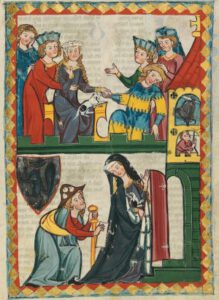 Swiss Minnesong from the Manesse Songbook
Swiss Minnesong from the Manesse SongbookBy the 12th century, the southern regions of the German speaking lands had developed into the center of classical Minnesong. In the Swiss region, the movement was particularly strong and lasted well into the 14th century. Many of the renowned Minnesingers carry names of Swiss towns in their coat of arms, and it was in this region that the greatest effort was made to collect and preserve the songs for posterity. The most important and comprehensive source of Minnesang is the Codex Manesse, a collection of songs by 138 different minnesingers, each introduced with a beautiful miniature. The manuscript was produced between 1300 and 1340 in Zurich, probably commissioned by the Manesse family, who also lent the manuscript its name: in one of the songs documented here, Johannes Hadlaub praises the brothers Manesse and commends their laudable effort in collecting the songs for the manuscript.
While there are many sources for the texts, the melodies to which these texts should be sung have not been as well preserved. Only few and sometimes fragmented melodies have survived to this day, some via obscure pathways. Ensemble Dragma has taken it upon itself to hunt for and collect the surviving melodies, reuniting them with the original texts. For texts which have seemingly lost their corresponding melodies, the ensemble has studied the parallel repertory of French and Occitan Minnesong (trobadors and trouvères) and well as the German “Sangspruchdichtung”, searching for possible contrafacts. After painstaking but rewarding work, the ensemble is now able to present a fascinating and colorful program of long forgotten songs firmly rooted in Swiss tradition.
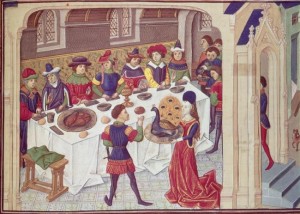
‘Musical Delicacies’ combines the arts of music and cooking to create a shared musical experience of taste. Late medieval songs vividly and accurately describe the pleasures of food, drink and feasting. Cookbooks from this period contain a wide variety of recipes. In a full-length programme of music from the late Middle Ages and the Renaissance, recipes are presented and the art of cooking and the enjoyment of wine are celebrated in all the languages of Europe. Cook Eveline Gurtner prepares historical delicacies to accompany the programme, which are offered to the audience for their enjoyment. At the end of the show, a small printed cookbook is given to the audience so that they can follow the recipes at home.

Mit dem Laden des Videos akzeptieren Sie die Datenschutzerklärung von YouTube.
Mehr erfahren
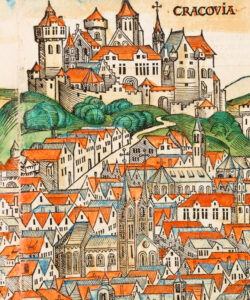
Programs “Regina Gloriosa” and “Laus Cracoviae”
A manuscript saved from a sea of flames? International cultural exchange in the late Middle Ages?
What sounds like the headlines of a current daily newspaper, is the story behind the project “KRAS”. The two programs we offer are focussed on the Polish manuscript KRAS, the so-called Codex Krasiński (early 15th century). Having only narrowly escaped fires during the Second World War, the manuscript is now one of the most important musical treasures in the Warsaw National Library and is kept in a fire-proof safe. It contains 40 pieces of music from all over Europe and bears witness to Poland’s cultural golden era in the late Middle Ages.
The first program, “Regina Gloriosa”, focuses on the works of the Cracow court composer Nicholas of Radom. The program presents songs in the praise of Mary. In the medieval world view, Mary was an approachable mother of Christ, who held love, forgiveness and warmth in store for all people. The Marian songs presented here are personal meditative iterations, speaking directly to the heart of a modern-day person. The result is a sensual, meditative program of praise.
The second program, “Laus Cracoviae”, features virtuoso instrumental pieces and hymns in praise of the Polish royal family. It feature songs about the golden city of Cracow, the royal seat of the Jagellionian dynasty, describing in detail the vibrant life of this medieval city. These magnificent songs of praise are framed by international works by Johannes Ciconia and Antonio Zacara da Teramo, which captivate with lively rhythms and Italian joie de vivre.
3 musicians (voice, harp, lute and vielle), large ensemble with up to 13 musicians

Mit dem Laden des Videos akzeptieren Sie die Datenschutzerklärung von YouTube.
Mehr erfahren